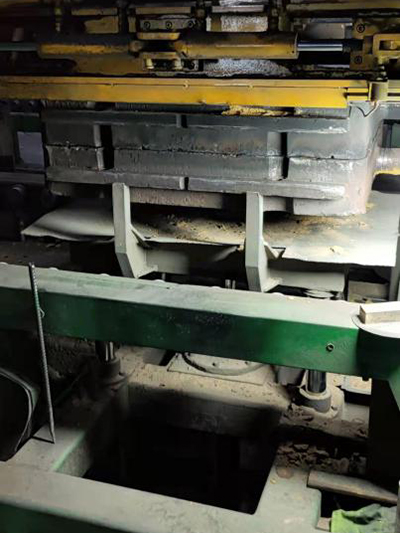The process of sanding ceramic is an intricate dance between artistry and technical prowess, each passing motion bringing the ceramic piece closer to its envisioned perfection. This transformation is not just a testament to modern technological advancements but is also deeply rooted in centuries-old traditions of craftsmanship. Whether you're a hobbyist or a professional ceramist, understanding the nuances of sanding ceramics opens a pathway to creating masterpieces that can withstand scrutiny both in aesthetic and durability.

Sanding ceramic is an indispensable step in refining the surface quality of the ceramic item, ensuring it is free from any imperfections that may have arisen during firing. Professional ceramists often begin with a rough grit to tackle larger inconsistencies or surface blemishes, gradually moving to a finer grit, much like a painter starting with broad strokes before adding fine details. This transition from coarse to fine abrasives is critical as it ensures that the surface smooths out progressively, reducing the risk of damaging the piece, which can happen if one is too aggressive with finer grits on an initially rough surface.
Experience has shown that the choice of sanding tool can have a significant impact on the outcome. Using proper tools like diamond sanding pads or silicon carbide sandpapers, which are specifically designed for ceramics, makes a substantial difference. These materials are made to endure the hardness of ceramic and provide a uniform finish without the wear-down that ordinary sandpapers would suffer. For those curious minds in search of precision, sanding blocks with ergonomic designs also offer better control and comfort, especially when working on intricate designs or larger surfaces.

In terms of expertise, it's crucial to understand the properties of the specific ceramic being sanded. Porcelain, earthenware, and stoneware each respond differently to sanding. Porcelain, known for its density and smooth surface, often requires less aggressive sanding. Meanwhile, stoneware, which is more robust, may accommodate more rigorous approaches. This knowledge comes from both practical experience and a deep understanding of material science, guiding professionals to choose the right techniques and tools.
sanding ceramic
Authoritativeness in this subject comes from years of study and application. Institutions that teach ceramic arts often have courses that emphasize the importance of surface finishing, and professional artisans frequently share their insights and developments in materials. Trust in these sources is fundamental for both enthusiasts and seasoned professionals aiming to elevate their craft.
Moreover, trustworthiness in the information and techniques applied can greatly influence the final product. Engaging with well-documented processes and adhering to industry standards ensures that each piece not only meets aesthetic desires but also stands robust against challenges of time and use. The meticulous process of sanding, when executed with precision and the correct methodology, upholds the longevity and functional beauty of ceramics, positioning them as both everyday essentials and exquisite works of art.
In conclusion, sanding ceramics represents more than just an aesthetic journey; it's a critical process of refinement and precision. By embracing both traditional techniques and contemporary technologies, one can achieve a high standard of craftsmanship. Expertise gained through experience, coupled with following authoritative practices, ensures that ceramic products not only fulfill their intended functional purpose but also elevate the artistry and skill of the ceramist. This approach not only optimizes the production process but also builds a trustworthy name in the world of ceramics, inviting admiration and respect from users and fellow artisans alike.
Post time:Januari . 06, 2025 11:15
Next:sand ceramic
